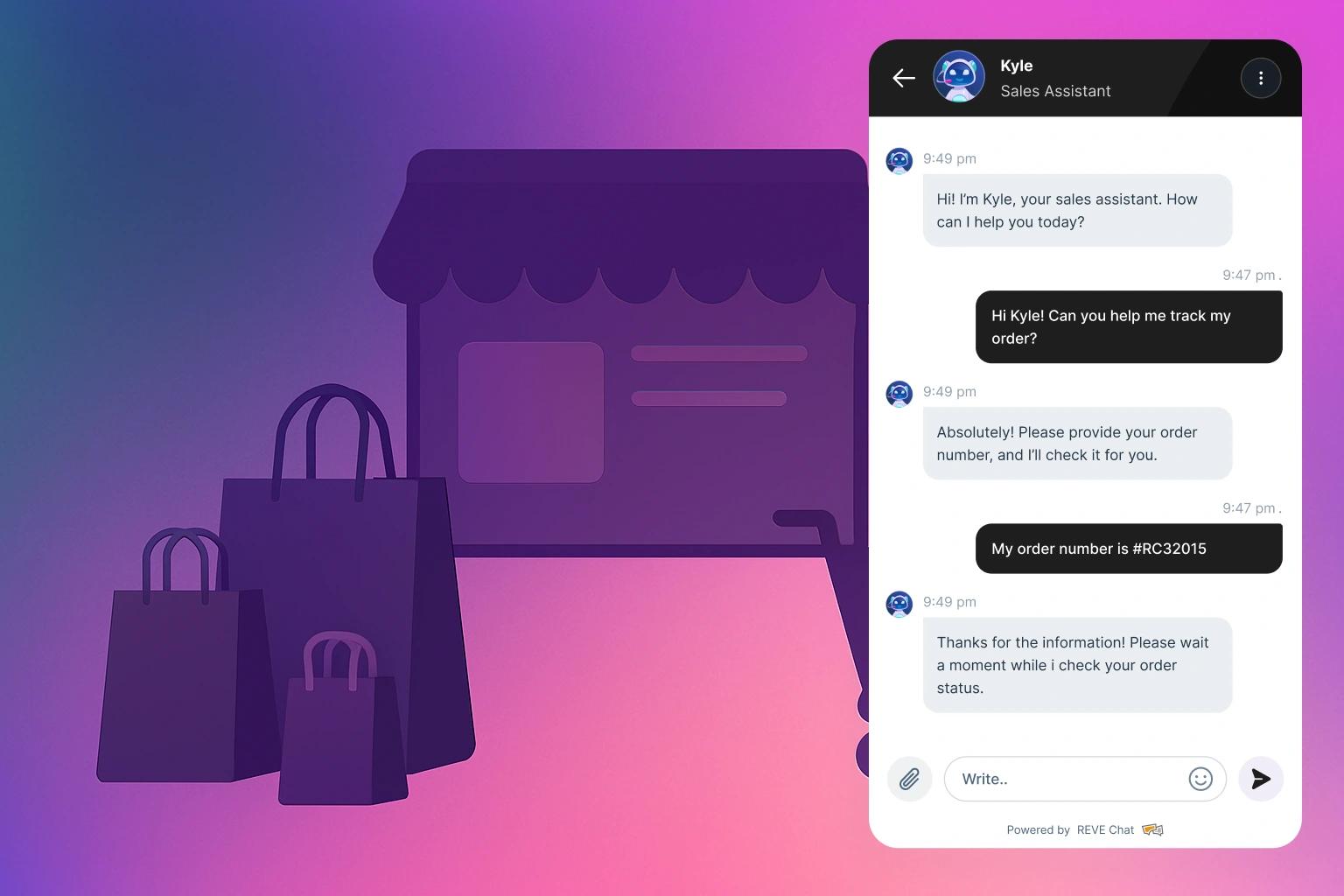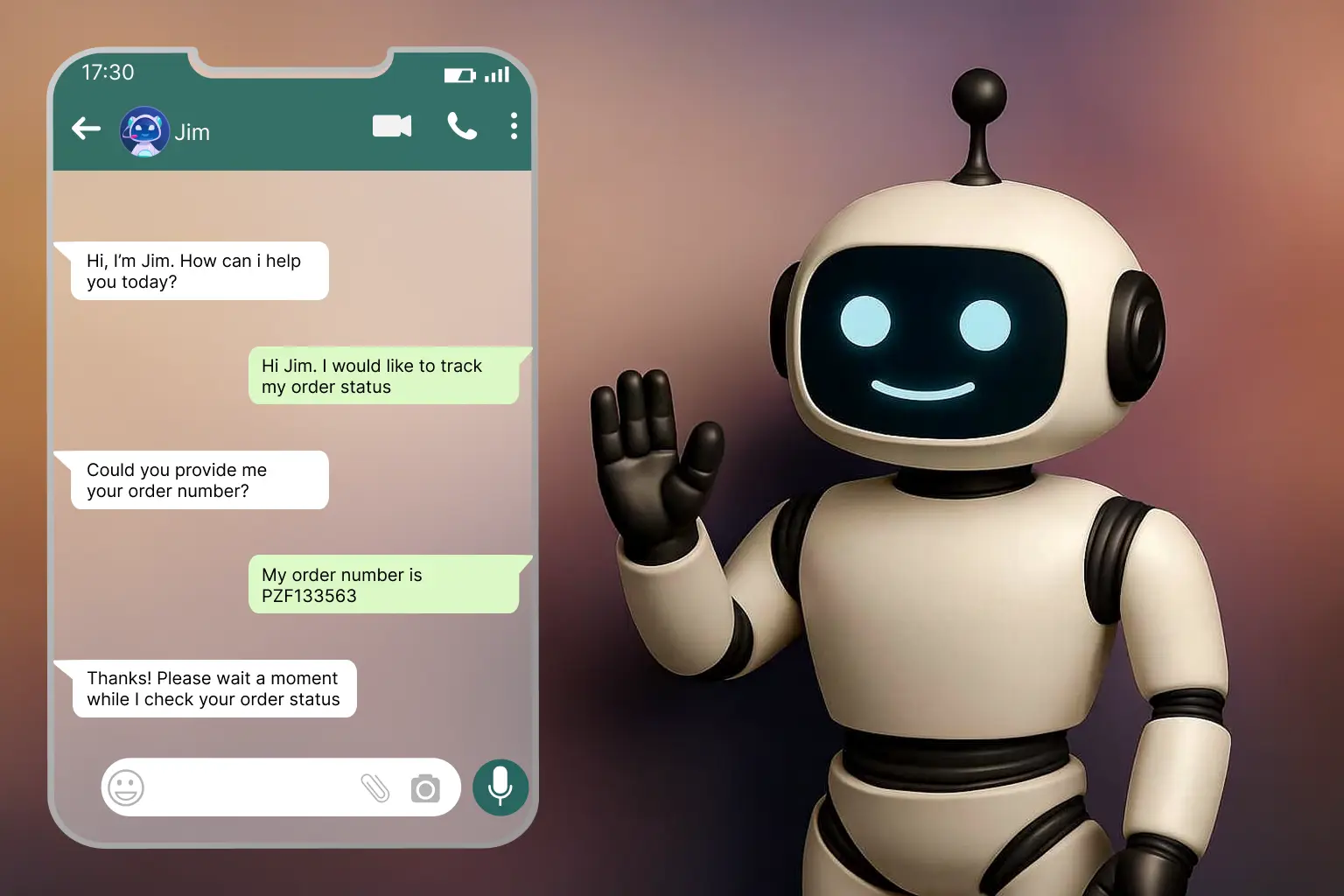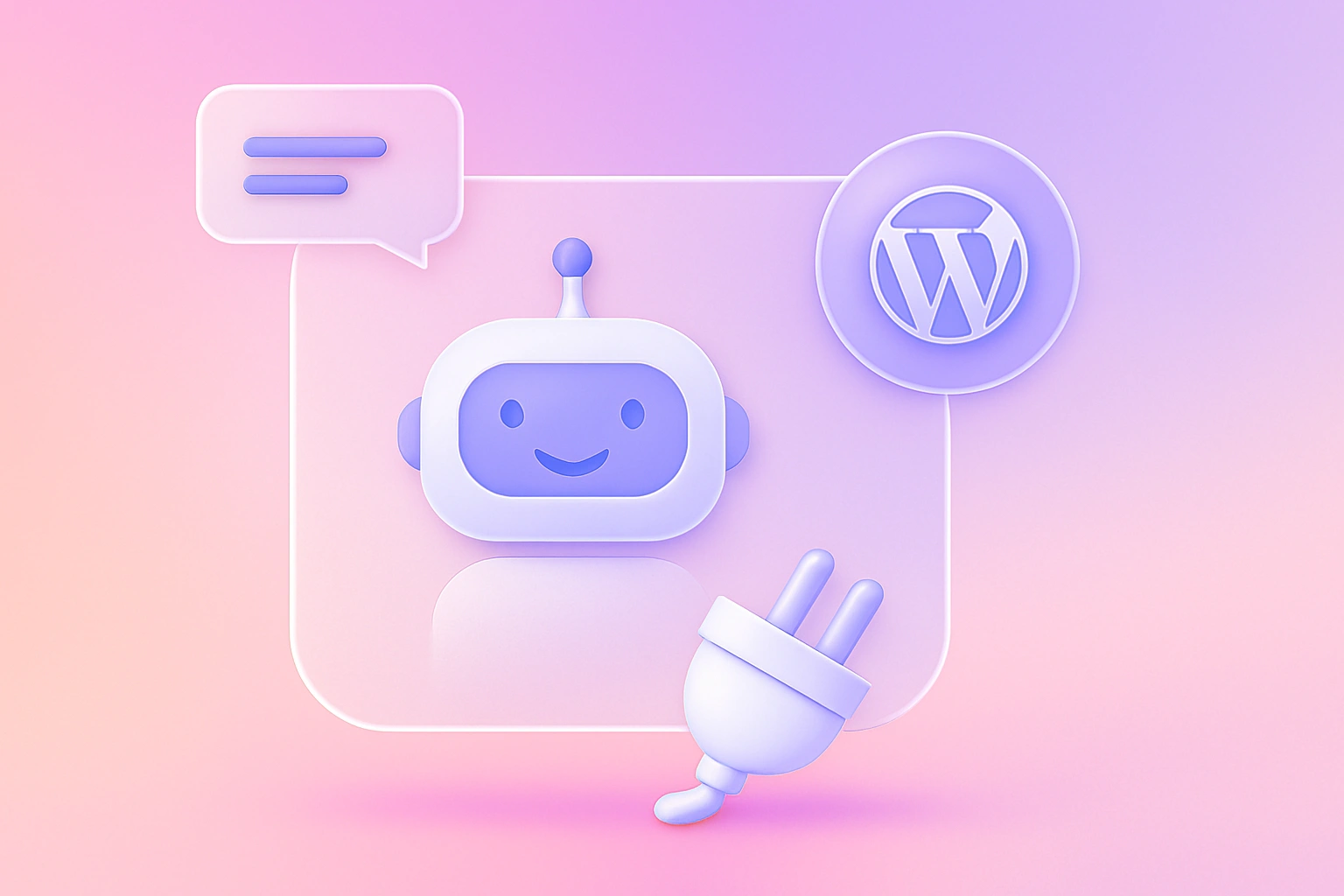The Dual Impact of Chatbots: Business and Customer Benefits
- May 23, 2025
- 11 mins read
- Listen
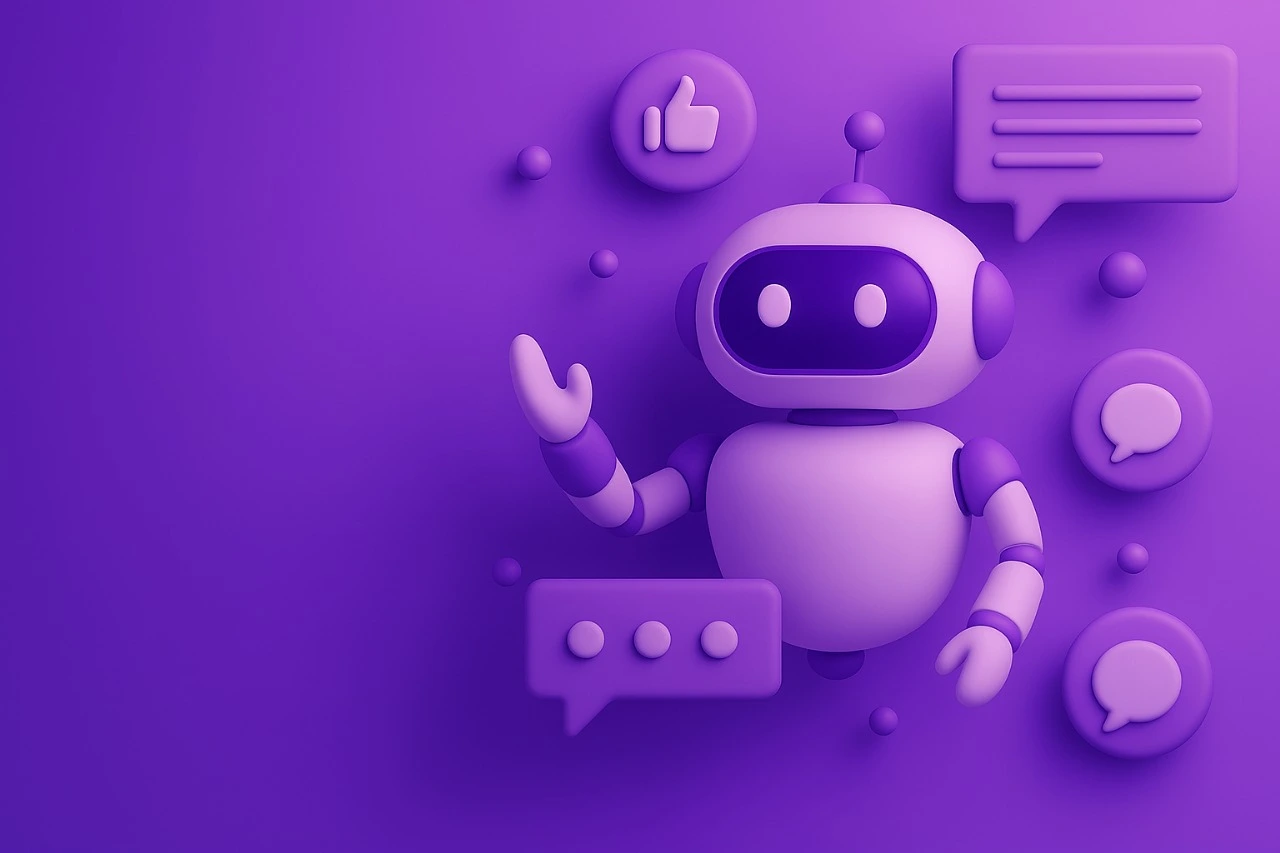
Did you know businesses that use chatbots boost revenue by up to 30% while cutting costs in half? Sounds very surprising, right? These tireless assistants work around the clock, turning frustrated customers into loyal fans and chaotic workflows into smooth operations.
With 85% of businesses expected to adopt chatbots by 2027, according to Gartner. They’re reshaping industries like never before. Whether it’s generating leads, simplifying checkouts, or delivering seamless support across channels, chatbots are the ultimate tool for success.
Curious how AI Chatbots can transform your business, delight customers, and empower your support team? Let’s explore!
Benefits of Chatbots for Businesses
Chatbots drive business success by cutting costs, scaling operations, and boosting sales through 24/7 availability, seamless integrations, and proactive engagement.
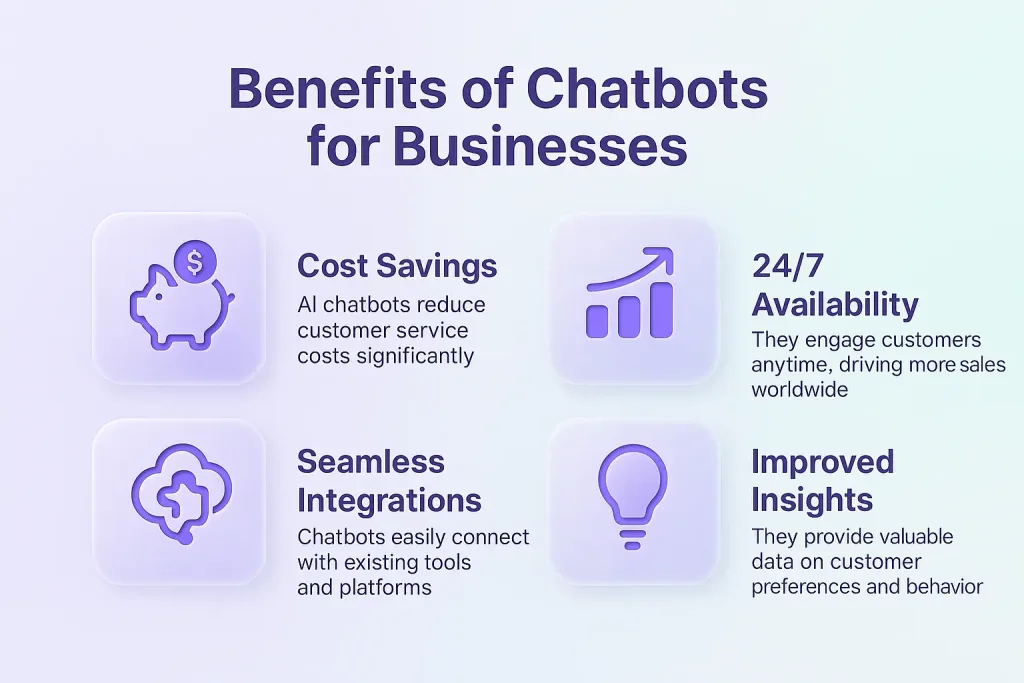
Let’s discover how it brings tons of benefits for your business.
Save Big on Costs
Chatbots handle repetitive tasks like answering FAQs or processing returns, reducing the need for large support teams. For example, a chatbot can instantly respond to “What’s my order status?”, saving hours of staff time.
According to Gartner, chatbots can cut customer service costs by up to 30%. This means more budget for growth initiatives like marketing or product development.
Scale Without Limits
Chatbots manage thousands of customer queries at once, letting businesses grow without adding staff. Whether it’s a small startup or a global brand, chatbots can handle spikes in demand effortlessly.
For instance, during a product launch, a chatbot can answer questions from thousands of visitors simultaneously. This scalability ensures businesses never miss a customer, no matter the volume.
Unlock Powerful Data
Chatbots collect customer data like preferences and browsing habits, fueling smarter marketing. For example, if a customer frequently views laptops, the chatbot can flag this for targeted campaigns.
This data-driven approach boosts ROI on marketing efforts. Forrester notes that 63% of businesses using chatbots see improved customer insights, driving better decisions.
24/7 Support & Sales Opportunities
Chatbots engage customers anytime, capturing sales even outside business hours. Imagine a customer browsing at 3 a.m., a chatbot can guide them to purchase without delay.
This round-the-clock availability boosts revenue by tapping into global markets. It’s like having a salesperson who never sleeps, ensuring no opportunity is missed.
Seamless Integration
Chatbots sync with CRM systems, e-commerce platforms, ticketing solutions, and social media for streamlined operations. For example, a chatbot feature like automated ticket creation logs customer issues directly into your CRM, saving time.
This integration reduces manual work and keeps teams aligned. Businesses can focus on strategy while chatbots handle the heavy lifting.
Boost Sales Conversion
Proactive chatbots nudge customers to buy with timely prompts, like offering a discount when someone lingers on a product page.
A feature like proactive live chat triggers can initiate conversations at the right moment, increasing conversions by up to 20%, per HubSpot. This targeted engagement turns browsers into buyers faster.
Enhance Brand Reputation
Chatbots deliver consistent, professional responses, building trust with customers. For instance, answering queries politely and accurately every time makes your brand look reliable.
This consistency strengthens customer loyalty and sets you apart from competitors. A polished brand image drives repeat business and referrals.
Reduce Cart Abandonment
Chatbots guide customers through checkout by answering questions or offering reassurances, cutting abandonment rates by 25%, according to Salesforce. For example, a chatbot can clarify shipping costs instantly, preventing drop-offs.
This smooth experience keeps customers moving toward purchase. It’s like having a virtual assistant closing every sale.
Collect Customer Feedback
Chatbots gather real-time feedback through post-purchase surveys or casual prompts, helping businesses improve. For example, asking “How was your shopping experience?” after a sale provides actionable insights.

This feedback loop drives product and service enhancements. It’s a simple way to stay customer-focused and competitive.
Increased Lead Generation
Chatbots capture and qualify leads by asking targeted questions, like “What product are you looking for?” This can boost lead generation by 30%, per Drift.
For instance, a chatbot can guide a visitor to sign up for a newsletter, feeding your sales funnel. It’s like having a lead-generating machine working 24/7.
Easy Checkout
Chatbots simplify checkout with guided prompts and instant support that reduce friction. For example, they can answer “Is this item in stock?” mid-checkout, preventing delays.
This seamless process boosts sales and customer satisfaction. A smooth checkout turns hesitant shoppers into happy buyers.
Fewer Routine Tasks
Chatbots handle repetitive queries like password resets or billing questions, freeing agents for complex tasks like technical support. For example, a chatbot can resolve 80% of FAQ inquiries, letting agents focus on high-priority cases.
This reduces burnout and boosts team efficiency. Gartner states that chatbots can manage 70% of customer interactions, cutting workload significantly.
In retail or telecom, this means agents tackle meaningful issues, improving service quality. Chatbots are like a tireless assistant keeping the queue clear.
Consistency
Chatbots deliver accurate, uniform responses, eliminating human errors. For instance, every customer gets the same clear return policy details, avoiding confusion. This reliability builds trust. Especially in finance or healthcare, where precision matters.
Forrester notes that 65% of businesses using chatbots see improved consistency. Chatbots ensure every interaction is professional, strengthening your brand’s reputation.
Higher Satisfaction
Chatbots drive customer satisfaction with fast, accurate help and seamless handoffs to human agents for complex issues. For example, a chatbot resolving a simple query can smoothly escalate a technical issue to an agent, keeping the experience fluid.
Salesforce reports 20% higher CSAT scores with chatbots. In hospitality or retail, this leads to loyal customers. Chatbots blend automation with empathy, acting like a smile that never fades.
Omnichannel Support
Chatbots provide seamless service across email, social media, and live chat, creating a unified experience.
A customer starting a query on Twitter and continuing on your website won’t need to repeat themselves. HubSpot states that 73% of consumers expect omnichannel support, and chatbots deliver.
This continuity shines in banking or retail, making customers feel valued. Chatbots are like a bridge connecting every touchpoint.
Predictive Assistance
Chatbots anticipate needs by analyzing behavior, like offering return instructions when a customer browses a help page.
This foresight reduces friction and delights users. Forrester found that predictive support boosts satisfaction for 60% of users. In telecom or e-commerce, this prevents escalations. Chatbots are like a crystal ball, solving issues before they arise.
Agent Training Support
Chatbots empower agents with real-time response suggestions, speeding up resolutions. For instance, an agent handling a technical query might see a chatbot suggest a troubleshooting script. This boosts efficiency, especially for new hires.
Customer Benefits of Chatbots
Chatbots delight customers with instant answers, personalized recommendations, and multilingual support, creating convenient, engaging, and trustworthy shopping experiences.
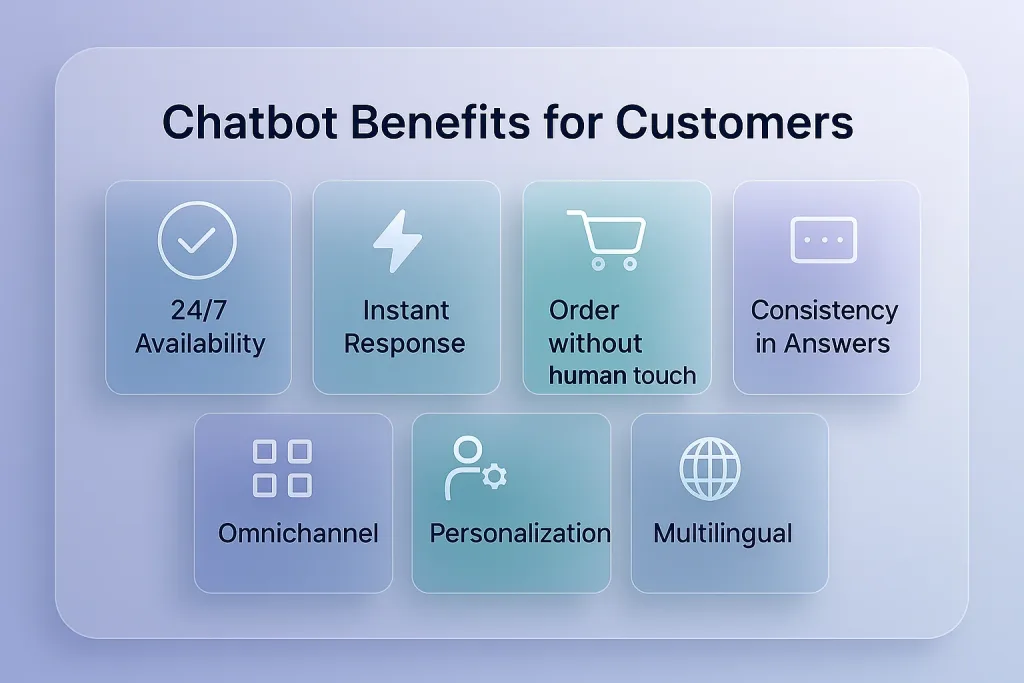
Now let’s look at the key takeaways of chatbots for customer service.
Instant Answers
Nobody likes waiting on hold for answers. Chatbots provide immediate responses to questions like “When will my order arrive?” or “What’s your return policy?”, saving customers time and frustration. For example, a customer checking delivery status at midnight gets an instant reply, keeping them happy.
According to HubSpot, 90% of customers want immediate responses, and chatbots deliver just that. This speed boosts satisfaction and keeps customers coming back. It’s like having a 24/7 concierge at their fingertips.
Tailored Experiences
Chatbots use customer data to offer personalized recommendations, making shopping feel special.
For instance, if a customer browses running shoes, a chatbot with context-aware responses might suggest a popular pair based on their size or brand preference. This tailored approach increases purchase likelihood and builds loyalty.
Forrester reports that 77% of consumers prefer personalized experiences, which chatbots excel at delivering. They turn generic shopping into a custom experience.
Ultimate Convenience
Chatbots are available on platforms customers already use, like websites, Apps, WhatsApp, Messenger, Telegram, or Instagram, making help accessible anywhere. Whether a customer is shopping on their phone or laptop, they can get answers without switching apps.
For example, a shopper on Facebook Messenger can check product availability instantly. This flexibility saves time and effort, enhancing the customer experience.
Chatbots act like a personal assistant, always ready to help, no matter the platform or time of day.
Proactive Customer Service
Chatbots don’t wait for customers to ask. They start conversations at the right moment. For example, if a customer lingers on a checkout page, a chatbot might offer a 10% discount to seal the deal.
This proactive approach creates delightful moments and boosts conversions. According to Salesforce, 64% of consumers expect real-time engagement, and chatbots deliver it seamlessly. By anticipating needs, they make shopping smoother and more enjoyable.
It’s like having a friendly guide nudging customers toward a great experience.
Self-Service Empowerment
Chatbots let customers solve problems on their own, like tracking orders or initiating returns, without contacting support. For instance, a customer can use a chatbot to update their shipping address in seconds.
This independence saves time and reduces frustration. Gartner notes that self-service options improve customer satisfaction for 70% of users.
Chatbots provide intuitive interfaces that make self-service easy and empowering. They give customers control, making interactions quick and stress-free.
Enhanced Trust
Chatbots build confidence with secure, reliable interactions, especially for sensitive queries like payment issues. For example, a chatbot can confirm a transaction’s safety using encrypted responses, reassuring customers. This reliability fosters trust in the brand.
Edelman reports that 68% of consumers prioritize trust in businesses, and chatbots help by ensuring consistent, secure communication.
They also handle data privacy concerns transparently, strengthening customer confidence. It’s like having a trustworthy assistant safeguarding every interaction.
Fun, Gamified Engagement
Chatbots make shopping exciting with interactive features like quizzes or product finders. For example, a chatbot might offer a “Find Your Perfect Skincare Routine” quiz, guiding customers to products while keeping them engaged.
This gamified approach turns browsing into a fun adventure, increasing time spent on your site.
Chatbots create memorable moments that keep customers coming back for more. They transform shopping into a playful, enjoyable journey.
Support in Multiple Languages
Chatbots break language barriers by supporting customers in their native languages, making interactions feel personal. For multilingual customer service, LLM-based AI chatbots play a crucial role.
For instance, a Spanish-speaking customer can ask about product details and get a response in Spanish instantly. This inclusivity expands your customer base and boosts satisfaction.
CSA Research states that 76% of consumers prefer buying from brands that communicate in their language. Chatbots make global shopping seamless and welcoming. They ensure every customer feels understood, no matter where they’re from.
Prepare Your Business for the Future with AI Chatbots
Chatbots are gradually transforming the contours of customer communication. They are adding a new dimension to different aspects of the industry, be it customer service, sales, marketing, and engagement.
AI agents represent the next evolution of AI chatbots, capable of handling complex tasks autonomously by combining natural language understanding with decision-making and action-taking abilities.
Conclusion
Chatbots empower businesses to reduce operational costs, scale customer support, and drive more sales by offering 24/7 availability, handling high volumes of inquiries, and integrating seamlessly with CRM and other business tools.
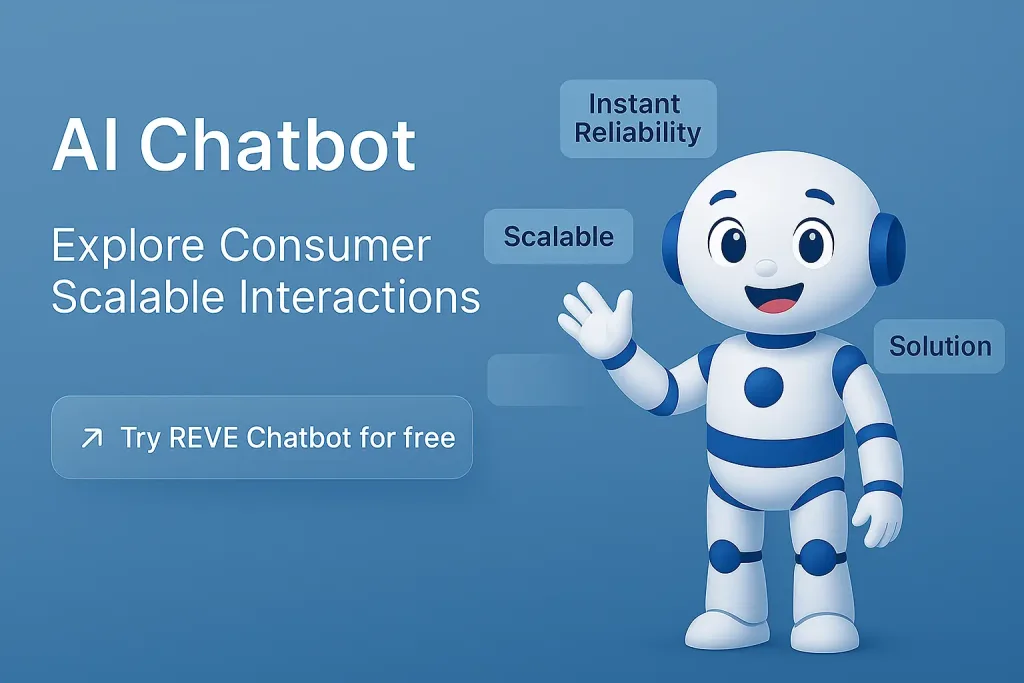
They enable faster response times, automate repetitive tasks, gather customer insights, and deliver consistent, personalized experiences that enhance customer satisfaction and loyalty.
Your business deserves to shine, make the leap, and lead the future now!
See also: A complete guide to AI chatbot!


